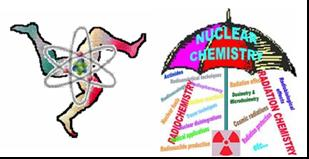Speaker
Dr
Jiří Mizera
(Nuclear Physics Institute ASCR)
Description
Formation of the Central European tektites - moldavites - has unequivocally been associated with a large meteorite impact to Ries region in western Bavaria in Germany 14.5 million years ago. However, after several decades of investigation, unambiguous assigning all source materials of moldavites and processes of their chemical differentiation still remains open. Despite some similarity of chemical composition between moldavites and isochronous sediments from vicinity of the Ries crater, there are some significant differences in both major and trace element contents, which cannot be attributed solely to the variability of sediments or later weathering processes. Geochemical characterization of a large collection of moldavites using various modes of instrumental neutron and photon activation analyses supported a novel hypothesis, according to which ash from biomass burned at the early stage of the meteorite impact contributed to the source materials. As shown by the geochemical data acquired in the study, this unconventional “biogenic component” could be indicated by enrichment in elements essential for plants (e.g., K, Ca, Mg) and depletion of nonessential elements (e.g., Na, Rb, Sr, Ba), similarly to redistribution of these elements during their transfer from soil to plants. Differentiation similar to that occuring during the soil/plant interaction has been observed also for other, nonessential elements, e.g., U and Th. Correlations between the K/Na ratio and Ca/Sr, Ca/Ba, K/Rb, U/Th ratios, as well as some other indicators of the “biogenic component” observed in moldavites from various parts of the Central European tektite strewn field are presented and discussed.
This study has been supported by the Czech Science Foundation grant 205/09/0991.
Author
Dr
Jiří Mizera
(Nuclear Physics Institute ASCR)
Co-authors
Dr
Jan Kameník
(Nuclear Physics Institute ASCR)
Dr
Zdeněk Řanda
(Nuclear Physics Institute ASCR)
